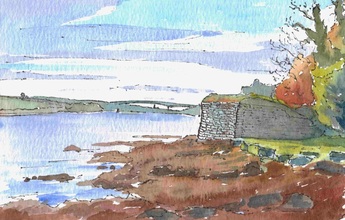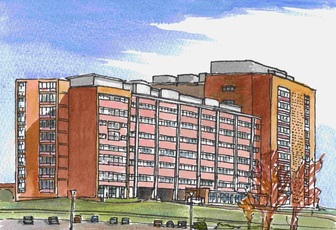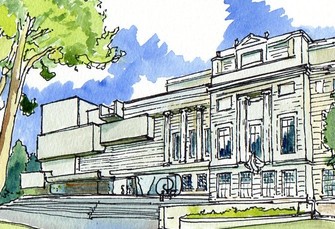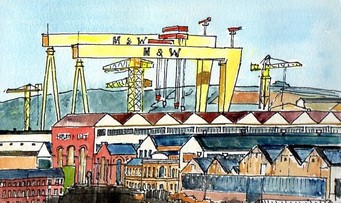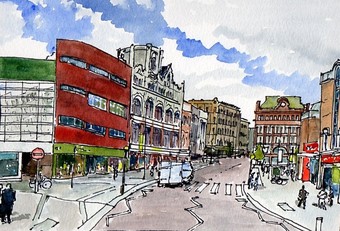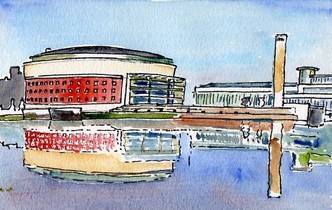Twentieth Century |
|
|
During World War Two many of Northern Ireland's country houses were requisitioned for military use. The whole region became involved in the war effort and Belfast suffered from German bombing. Flying Boats were based on Lough Erne and many airfields were created along the north west coast and beside Lough Foyle, to support the convoys. This was coordinated from Derry which, as the most westerly port in the UK, also became a major base for refitting ships. Though the Republic was neutral during the 'Emergency'. The three Ulster counties all have remnants of defensive emplacements dating from the era.
After the war, the 'International Style' became popular for official architecture. This placed emphasis upon function and often exposed structure. For many buildings the nature of materials were utilised to provide decoration. Reinforced concrete and other 'modern' materials were often celebrated as part of the design. The 'Brutalist' development of the approach delighted in the solid forms of mass concrete. The best example in the region is the competition winning extension to the Ulster Museum, which was completed in 1971. Though many traditional industries declined in the post war period the massive boat cranes of the Harland and Wolff shipyard in Belfast - Sampson and Goliath, became, and still remain, a strong symbol of the city's industry and industrial roots. Also in the 1970's the region descended into 30 years of conflict which saw the destruction of many buildings and left is mark on many more. By the mid 1980's some new buildings were being designed to be resistant to bomb attack. Such buildings had small amounts of glass, robust construction and often associated wide footpaths protected by bollards. The extension to the BBC headquarters in Belfast of 1984 is a good example as is the former Barratt's shoes building in Castle Street of the same year. Towards the end of the century, with peace agreements in sight, public buildings were constructed once more where security was less of a concern, or at least less obvious. Belfast's Waterfront Hall, completed in 1997, has a wide projecting glass bay. However, the bay is situated overlooking the river and an elevated landscaped space. Its vulnerable features are therefore positioned far from any potential car bombs. |
|
WW2 machine gun post, River Foyle.
Altnagelvin Hospital, Derry, 1960.
Ulster Museum, Belfast, 1971
Sampson and Goliath Cranes, Belfast, 1969 &1974.
Former Barrat's shoes (red building), Castle St, Belfast ,1984.
Belfast Waterfront Hall, 1997.
|

